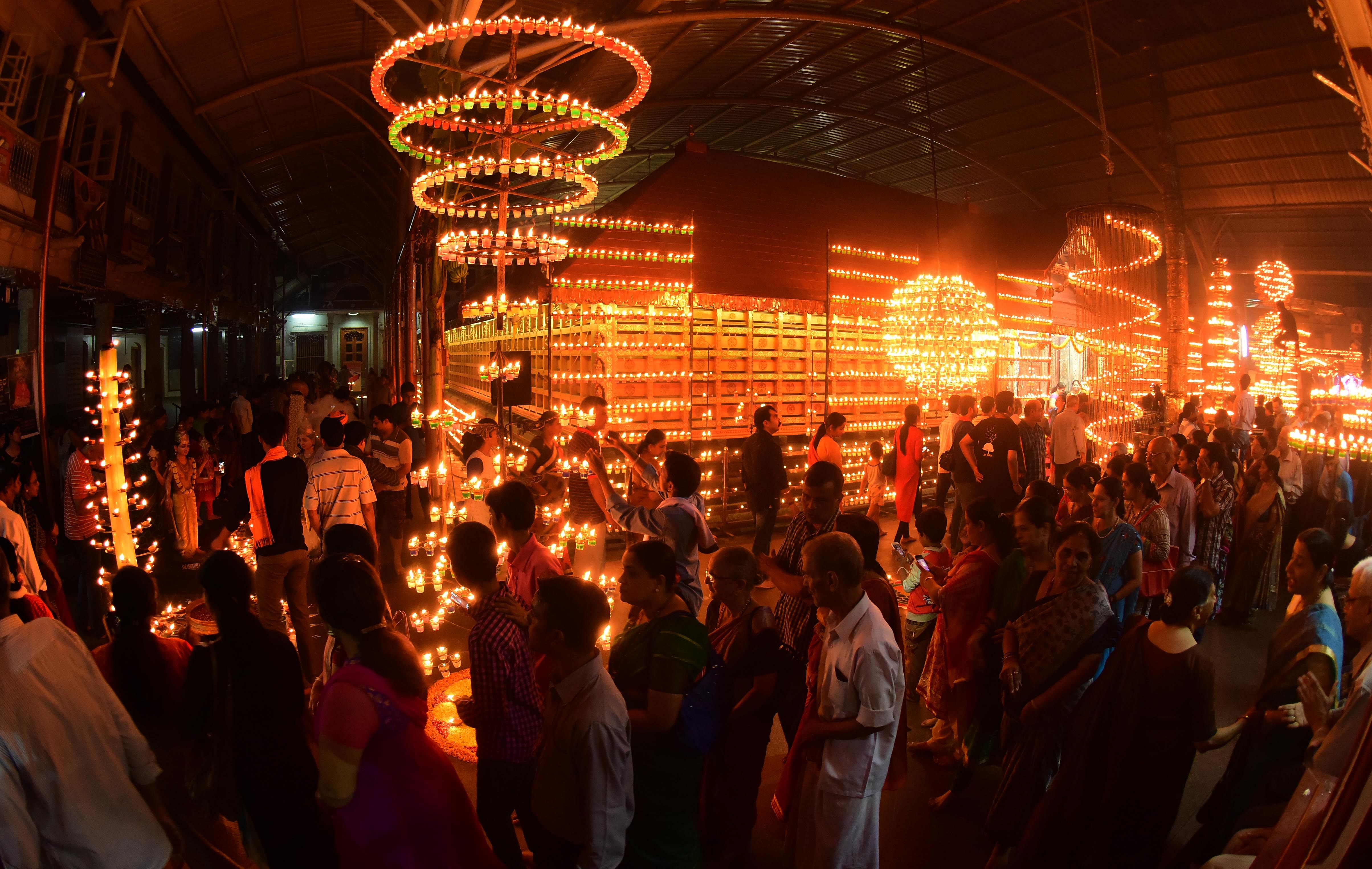
As all attention turns towards Mysuru for the world famous 'Jamboo Savari' on Vijayadashami day, a spectale of its own kind will unfold in Mangaluru.
On Vijayadashami, devotees eagerly await a spectacular event of lighting lamps, called ‘Deepotsava’, an indispensable part of Navaratri celebrations at the Sri Venkatarama Temple in Mangaluru.
During Navaratri, the Acharya Mutt celebrates ‘Sharadotsava’ where the idol of goddess Sharada is consecrated and worshipped. The celebrations began 95 years ago, and the 'Deepotsava’ provides a befitting conclusion to the Navaratri celebrations with thousands of oil lamps illuminating the corridors of the mutt.
Speaking to DH, Sri Sharadotsava committee member Ganesh Baliga said: “Vijayadashami signifies the victory of good over evil. The same is symbolised by the illuminated lights which do away the darkness of ignorance and sorrow, to bring knowledge and happiness. Deepotsava has now become a signature event during Navaratri."
However, apart from Vijayadashami, earthen lamps are also lit during 'Rangapooja'.
The idea of celebrating Vijayadashami through the 'Deepotsava' was translated into reality in 2009 after 60 volunteers decided to celebrate Navaratri in a different, yet, traditional manner.
The temple chief priest Jodumutt Bhaskar Bhat, the late Venkatesh Acharya of Acharya Mutt and Adige Balakrishna Shenoy were instrumental in providing a traditional framework for Navaratri Deepotsava during the initial days.
“Now, the number of volunteers has almost doubled. Women volunteers, too, have become part of Deepotsava. They add a special touch by making rangoli patterns in earthen lamps,” Baliga said.
Preparations for Deepotsava begins on the previous evening of Vijayadashami, at the ‘Rajangana’ of the temple. Tall lamp stands are assembled by welding iron rods and glass holders in metal frames of various shapes such as towers, dooms and globes.
The lamp stands are arranged in the temple corridor in front of the idol of Goddess Sharada, in the evening of Vijayadashami. After the pooja, the lamps are lit with the same 'aarti' offered to the goddess.
The largest stand contains about 400 glasses and therefore, the frame has to be strong enough to bear the weight. Apart from the pedestal lamp stands, there are hanging lamps supported by chains. These hanging lamps adore the roof as well. The volunteers stay awake during the previous night to make the arrangements.
The lamp stands are arranged in the temple corridor in front of the idol of Goddess Sharada, in the evening of Vijayadashami. After the pooja, the lamps are lit with the same 'aarti' offered to the goddess. In the process, devotees, too, get a chance to light the lamps.
Apart from the volunteers, 1500 people take part in making this event a grand success. The divine atmosphere is exemplified when the deity is seen in the light of oil lamps.
As the lamps illuminate the temple till midnight, there is a risk of glass lamps bursting due to high temperature.To avoid this, water is added into the oil lamps.
Approximately 1200 litres of gingelly oil is used to light lamps for the special day. Around 90% of the oil is donated by devotees, Baliga said, adding that the cost of the materials, including the lampstands, glass lamps and wicks, is around Rs 1 lakh.
Every year, the team strives to make the Deepotsava better than the previous year. As a result, Navaratri 'deepotsava' has become one of the highlights of Mangaluru Dasara and more number of devotees have been turning up every year.
Advocate G D Bhat, another member of Sharadotsava committee, said arranging customised lamp stands which come with hundreds of holders to carry the glass lamps is the most difficult task.
Wicks dipped in oil the previous day are placed with the help of a clip, on the brim of the glasses. Also, the glass lamps need to be treated with care.
A touch of creativity
While stating that each lamp stand is designed to be different than the other, G D Bhat said that there is no dearth of creativity as new styles are introduced each passing year. Lamp stands are made to swing with the help of an electric motor, which is mechanically modified to generate lesser speed.
The rotating lamps provide a striking effect. While adding water to the lamps, a pinch of colour is added to make the glasses appear colourful.
Taking a cue, other Sharadotsava and Ganeshotsava committees, too, have begun organising Deepotsava.
(Pictures source: DH Photo/Sharadotsava committee)